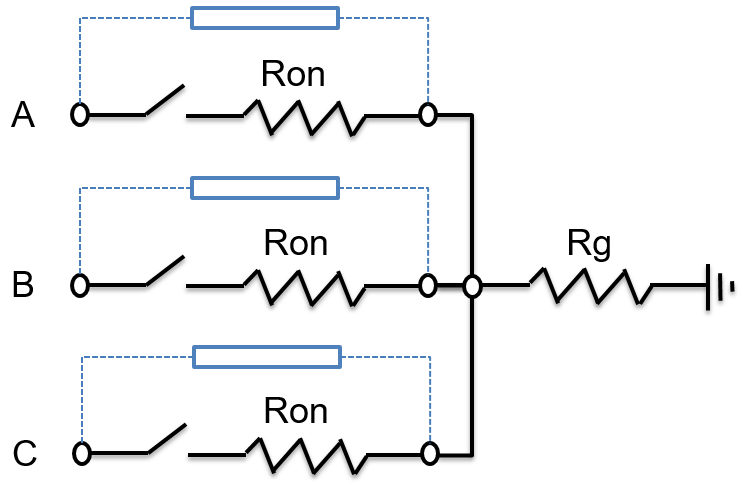Three-Phase Fault
(To be removed) Implement programmable phase-to-phase and phase-to-ground fault breaker system
The Specialized Power Systems library will be removed in R2026a. Use the Simscape™ Electrical™ blocks and functions instead. For more information on updating your models, see Upgrade Specialized Power System Models to use Simscape Electrical Blocks.
Libraries:
Simscape /
Electrical /
Specialized Power Systems /
Power Grid Elements
Description
The Three-Phase Fault block implements a three-phase circuit breaker where the opening and closing times can be controlled either from an external Simulink® signal (external control mode), or from an internal control timer (internal control mode).
The Three-Phase Fault block uses three Breaker blocks that can be individually switched on and off to program phase-to-phase faults, phase-to-ground faults, or a combination of phase-to-phase and ground faults. The arc extinction process of the Three-Phase Fault block is the same as for the Breaker block. See the Breaker block for details on the modeling of the single-phase breakers.

The ground resistance Rg is automatically set to 106 ohms when the ground fault option is not programmed. For example, to program a fault between the phases A and B you need to select the Phase A and Phase B block parameters only. To program a fault between the phase A and the ground, you need to select the Phase A and Ground parameters and specify a small value for the ground resistance.
If the Three-Phase Fault block is set in external control mode, a control
input appears in the block icon. The control signal connected to the fourth Simulink input must be either 0, which opens the breakers, or any
positive value, which closes the breakers. For clarity, a 1 signal is
commonly used to close the breakers. If the Three-Phase Fault block is set in
internal control mode, the switching times and status are specified in the dialog box of the
block.
Series Rs-Cs snubber circuits are included in the model. They can be optionally connected to the fault breakers. If the Three-Phase Fault block is in series with an inductive circuit, an open circuit or a current source, you must use the snubbers.
Ports
Input
Conserving
Parameters
Extended Capabilities
Version History
Introduced before R2006a